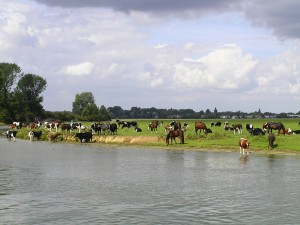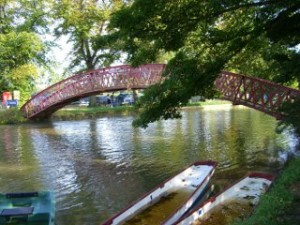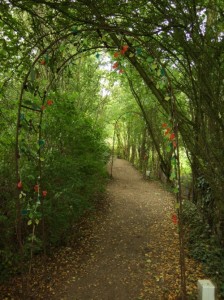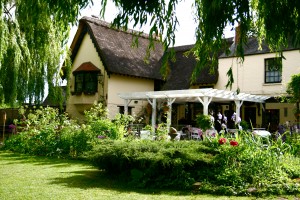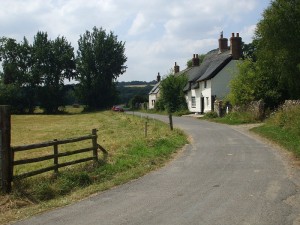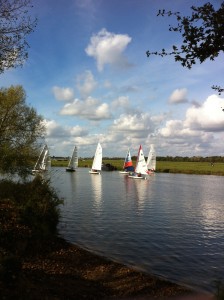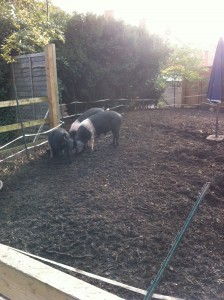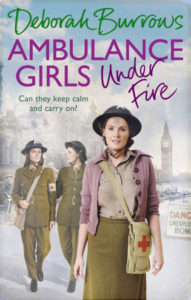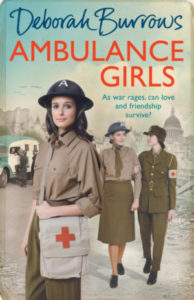In England you have to take good weather and really enjoy it, because it’s unlikely to last. Yesterday was a glorious autumn day, sunny and still. There was a hint of coolness in the air but it was warm in the sunshine. So we decided to take the bus into Oxford and walk north, out to Godstow and the Trout Inn, because I had such happy memories of it from my time in Oxford 14 years ago. I knew that it would be packed on a sunny afternoon, so we thought we’d have lunch at the Perch Inn at Binsey and then walk on to Godstow and the Trout.
One benefit of the trip was that we got to walk through Jericho, the ‘fun’ bit of Oxford. As Wiki says:
“Jericho is a historic suburb of the English city of Oxford. It consists of the streets bounded by the Oxford Canal, Worcester College, Walton Street and Walton Well Road. Located outside the old city wall, it was originally a place for travellers to rest if they had reached the city after the gates had closed. The name Jericho may have been adopted to signify this ‘remote place’ outside the wall.”
From Walton Well Road we crossed Portmeadow, that flat wasteland to the north of Oxford where animals graze. It floods each year and is a little bit of wilderness near the city. The cows walked into the river and the scene was bucolic.
You cross the river at the Rainbow Bridge, built in the 1870s by public subscription:
And then you join the Thames Path. It was crowded with walkers, cyclers and runners, enjoying what might be the last sunny Sunday until Spring.
Our first stop was for a ‘roast Sunday lunch’ at the Perch at Binsey. The Perch is a lovely pub – much improved from my last visit, mainly because it had been extensively damaged by fire in 2007 and rebuilt. It dates back 800 years, and the current building to at least the 17th century. Apparently, it’s haunted by a sailor, but I didn’t see him.
The Perch, together with most of the other buildings in Binsey, is owned by Christ Church College in Oxford. Lewis Carroll was often seen there, and it was one of the first places that he gave public readings of Alice in Wonderland. It was also a favorite of C. S. Lewis and – of course! – Inspector Morse. The entrance is through a sylvan path
into the garden, where we ate our meal.
From the front the pub looks like this:
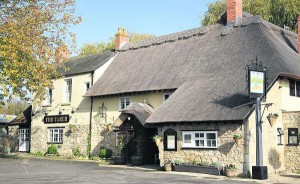
We wanted to walk to Binsey Church, which contains the Treacle Well. It’s really St Margaret’s Well, a holy well, but it was made especially famous by Lewis Carroll, who referred to it in Alice in Wonderland. The village is tiny but picturesque, but the road went on and on and on – the church is quite a way out of the village – and we did want to get to the Trout, so we left the church and well for another day.
As we walked on along the river towards Godstow we passed the famous Binsey Poplars. This avenue of poplars was made famous by Gerard Manley Hopkins in his poem Binsey Poplars (1879). He wrote it when he found the riverside trees felled. The replacements for these trees are now very old in their turn and are being replaced yet again.
My aspens dear, whose airy cages quelled,
Quelled or quenched in leaves the leaping sun,
All felled, felled, are all felled;
Of a fresh and following folded rank
Not spared, not one
That dandled a sandalled
Shadow that swam or sank
On meadow and river and wind-wandering weed-winding bank.
O if we but knew what we do
When we delve or hew—
Hack and rack the growing green!
Since country is so tender
To touch, her being so slender,
That, like this sleek and seeing ball
But a prick will make no eye at all,
Where we, even where we mean
To mend her we end her,
When we hew or delve:
After-comers cannot guess the beauty been.
Ten or twelve, only ten or twelve
Strokes of havoc unselve
The sweet especial scene,
Rural scene, a rural scene,
Sweet especial rural scene.
The Thames is such a lovely river. A group of young yachtsmen/women were on the river and made a charming sight as we rounded the bend.
The Trout Inn is actually in Lower Wolvercote, but it’s close to Godstow Bridge. It’s a 17th Century pub that stands on the banks of the Thames and has a terrace overlooking the river, close to a marvellous wooden bridge that used to stretch across to a whimsical garden on the other side. Its history includes being torched by Parliamentarian troops in the English Civil War.
I remembered drinking on the terrace when I was a student, watching the river and enjoying the ambience, surrounded by other students in a rowdy, but happy atmosphere. This is how I remember the Trout:
Not any more. It’s been ‘up-marketed’ and is now owned by the Vintage Inns Chain (Mitchells & Butlers). It has been extensively renovated inside, and has become a gastro pub. On the terrace were older, richer patrons and I didn’t see anyone resembling a student.
Cool Places says:
“An enormous gastro pub which seats hundreds and has a beautiful position right next to the river in Wolvercote. It’s a middle-of-the-road kind of place, super-busy in summer, and you’ll be hard-pushed to find a seat if you haven’t booked. But it has good food and interestingly was one of Inspector Morse’s favourite pubs in an earlier, seedier incarnation.”
The building itself is still lovely, as is Godstow Bridge, to the south of the Trout, which dates from medieval times. The wooden footbridge at the Trout Inn is still delightful, but the whimsical garden over the bridge is no more…
My verdict: still beautiful, very trendy, but not so much charm as it used to have.
We wanted afternoon tea, but were told that there would be a 30 minute wait, and the terrace by the Thames was the smoking area, and very crowded. So we walked on into Wolvercote and found Jacob’s Inn, which was much more our style. We sat in the garden near the chooks and the pigs and had our tea and scones, fresh from the oven.
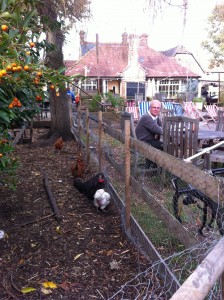
Toby sits near chooks and eats scones…
On the way back home we walked past the ruins of the Godstow nunnery. It was built on what was then an island between streams running into the River Thames. It was built in local limestone in honour of St Mary and St John the Baptist for Benedictine nuns and the church was consecrated in 1139. The Abbey was suppressed in 1539 and is now a picturesque ruin.
Today is rainy and damp and wet and miserable… Blah!


